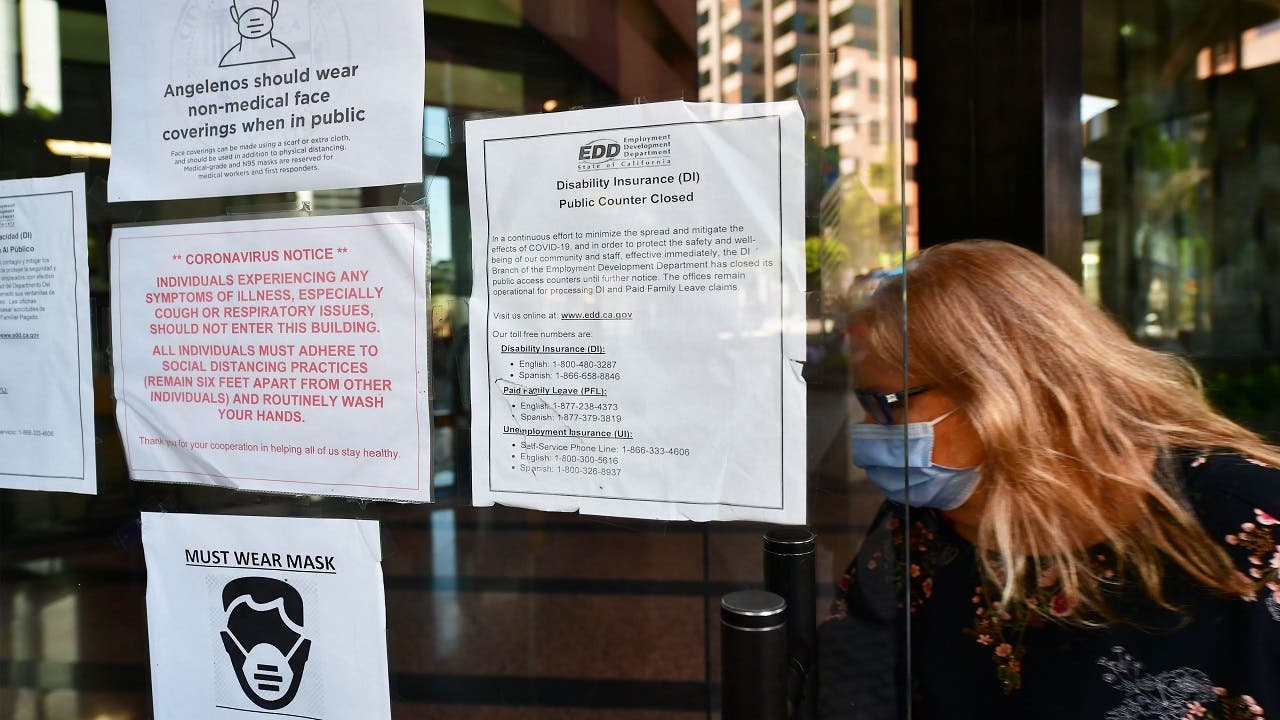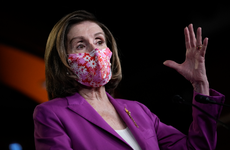Unemployment benefits: 8 possible reasons your payment is late — and what to do about it

The Bankrate promise
At Bankrate we strive to help you make smarter financial decisions. While we adhere to strict , this post may contain references to products from our partners. Here's an explanation for .
You could call it a perfect storm.
President Donald Trump’s unconventional boost to weekly unemployment benefits by way of executive order has left state agencies scrambling to implement new systems that now involve working with the Federal Emergency Management Agency (FEMA).
Meanwhile, the most Americans since the Great Depression are currently relying on jobless benefits and it’s largely overwhelming the system, while more keep applying each week at a historically elevated pace.
What that’s resulted in for many Americans is weeks, if not longer, of late or delayed unemployment insurance (UI) payments.
“People who are waiting on these payments are people who are relying on meager state UI benefits,” says Michele Evermore, a senior policy analyst at the National Employment Law Project who specializes in employment insurance. “They almost universally are being forced to make the choice between several terrible decisions, whether it’s getting a payday loan, putting money on credit cards, not paying rent, not buying medicine or not buying all the food they need. All of that is really scary.”
Here’s eight reasons why your weekly unemployment check might be delayed and what you can do about the problem.
Reasons why your payment might be delayed
1. Your state is overwhelmed with new jobless benefits applications
The most likely reason why you haven’t yet received your unemployment check is probably also the most frustrating: State unemployment agencies have been inundated with new filings and are hard-pressed to process them in a timely manner. This could be the underlying reason why you haven’t yet received your payment, whether you’re marked as approved or still pending.
It’s taking administrators a lot longer to verify your information, work history, earnings and reason for leaving — hoops and hurdles before your checks start coming. Many states are also using outdated systems and technology to process these claims. States are also having to keep existing payments flowing while still figuring out how to process new claims.
The coronavirus pandemic’s economic upheaval has been unprecedented. Nearly 6.9 million Americans filed for unemployment benefits during the week that ended on March 28, the highest on record and far eclipsing the previous surge of 695,000 in October of 1982. By the end of May, almost 1 in 4 U.S. workers would apply for weekly benefits and would hold in the millions for five straight months.
“When the pandemic and economic downturn hit six months ago, none of the state labor departments would have anticipated the more than 1000 percent increase in requests for unemployment insurance that they experienced,” says Mark Hamrick, Bankrate’s senior economic analyst and Washington bureau chief. “It has not only been the level of demand, but the persistence of it which has been remarkable.”
2. Your application might be flagged for what you listed as your reason for job loss
Applications for UI have never been the easiest to navigate. That goes for both filers and administrators.
Your application might be flagged for further verification if you have a unique reason for losing your job, particularly if it might sound like you quit your position voluntarily. An example of that, Evermore says, could be someone who’s recently been injured and had to quit their job operating heavy machinery. While it may appear like you’ve left voluntarily, there’s actually more to the story that requires additional verification.
“Any slightly more ambiguous answer to that question puts you in a category that gets extra review,” Evermore says. “And once the system says we can’t automatically approve this because there’s a flag, then it has to go to the adjudicator.”
3. Your application might be getting vetted for fraud
State unemployment offices have been hit massively with fraud. The FBI in July announced that they had seen a spike in fraudulent UI claims relating to the pandemic, which involved fake filers using stolen personally identifiable information. Other fraudulent applicants have used the names and personal information of people who have not lost their jobs, further overwhelming the system and costing states money.
To stop the problem, some states have started requiring more forms of ID. Others, such as California, have decided to pause making payments and accepting new applications for two weeks, so they can get control of the problem and work through their backlog.
“All of these people’s benefits are frozen while they’re flagged, and the state has got to verify their identity,” Evermore says. “That’s not always easy to do.”
4. You might not have answered a new application question correctly
Trump’s executive order didn’t just create an entirely new pool of money for state UI administrators, but it also added an additional step to the application: Individuals must certify that the coronavirus pandemic is the underlying reason why they’re either fully or partially unemployed.
That’s proven to be quite tricky for applicants. Wary about answering questions wrong, many Americans mark “no,” even if their job or income disruption is in some way related to the pandemic. And if you fall into this category, you might technically be receiving a reduced weekly benefit. But it wouldn’t be the full amount granted through Trump’s executive order.
“I would argue that anyone unemployed right now is unemployed because of the pandemic,” Evermore says. “People are getting the question with no context, so they don’t even know whether to answer “yes” to this question. If states were clear about why they were asking that would be helpful too.”
5. You may be missing documents in your application
While every state has individual documentation requirements, most applicants are generally required to submit their Social Security number, driver’s license, information about their employer, reason for leaving, first and last day worked, among other questions.
If you’re missing any of these documents or forgot to include something with your application that your individual state specifically requests, it might be holding up your claims.
6. You might not have provided the right payment profile
Perhaps your delay is as simple as not providing a preferred payment method for your weekly benefit. When you first apply for benefits, you’re also asked to provide information about your bank, including your routing and account numbers for direct deposit.
Labor Department officials have said that having a bank account on file can speed the process, but that’s not possible for the near 25 percent of U.S. households who are either unbanked or underbanked. In those instances, your state department might be preparing a debit card or prepaid card that you can specifically use to access your benefits, but that’s only going to take time.
7. You haven’t clicked yourself as certified to work
One of the simplest reasons why your payment might be delayed — every week before you start receiving your benefits, you have to “certify” yourself as able and ready to work if a position were to be offered to you.
In most states, you have to complete these steps, so your state unemployment office can process your weekly payment without a delay.
8. Your state might have run out of funds for the new boost — or hasn’t paid them out at all
Trump’s executive boost to UI benefits isn’t lasting as long as he thought it would. When the president first took action, he insisted that those extra payments (initially touted as $400, but most of the time amounting to $300) would be made until December 6, or until FEMA’s pot of money ran out — but that’s already begun.
Most states have only been able to make about six weeks of payments on that boosted amount, Evermore says. Seven states have already depleted those extra benefits, according to a Lost Wages Assistance program tracker, which includes Arizona, Montana, North Carolina and Texas. Meanwhile, 15 states’ additional payments are still pending. South Dakota never took advantage of the program at all.
If you were approved for extra benefits but still haven’t received those payments, you should eventually receive them backdated, Evermore says. But if you’ve still been waiting on your application to be approved by the time the pot of money runs out, you’ll most likely not be able to receive those extra payments.
“If the money runs out, the money is out,” Evermore says.
6 things to do about the late payment
1. Contact your state unemployment office
In most cases, it can be valuable to get through to your state unemployment office and speak with a representative. They can help you identify any pain points in your application and perhaps speed up the process for you, though some filers have been having trouble getting through to speak with an agent amid massive job loss nationwide.
If you’re still waiting on an approval, it might also be worth a shot to reach out and see if they can review your application while you’re on the phone. That might help you obtain those extra benefits, depending on what state you live in, before they run out.
“For those who are still struggling to receive payments, they should do their best to get in touch with a real person in the agency responsible to understand the source of the bottleneck,” Hamrick says. “If that effort isn’t successful, contact a local or state elected official to ask for their assistance to try to break through the logjam.”
2. Submit any new forms of identification or documentation
In instances when you’re worried about being vetted for fraud or missing documents, it’s worthwhile to log into your unemployment application and submit any new documentation. You should also consider uploading a new picture of your ID or another form of identification that your state agency can use to verify your claims.
3. Update your payment profile
That also goes for updating your payment profile. If you perhaps forgot to submit your direct deposit information or got a new bank account since applying for your benefits, be sure to log back in to your online account or work with a representative in person or over the phone to update that information as quickly as possible.
4. Work with any lenders or companies you regularly pay a bill to
In the meantime, while you wait on your payments, make a list of everyone you regularly pay a bill to and work with. It’s worth reaching out to all of those lenders and firms to see if they might be able to help work out a payment plan while you await more income through UI.
They also might be able to reduce your monthly payment, or you could switch to a cheaper plan if it’s for a utility company.
5. If you’re denied, apply again
Most experts are in agreement that you should always re-apply if you believe you were mistakenly denied a benefit. Whether it was a mistake on the state agency’s end or your own, filing again is worth a shot when it means the difference between affording groceries and rent.
6. Be patient — and contact your state representatives
Unfortunately, however, waiting for your UI benefits is majorly just a waiting game.
But you’re not entirely defenseless while you wait for your payments. Evermore recommends reaching out to your state representatives and lawmakers, letting them know about the issues you’ve faced. That way you bring the problems to their attention and they feel more pressure to make changes.
“The biggest reason that the Federal Pandemic Unemployment Compensation (FPUC) hasn’t been extended is because people in Washington think, ‘Problem solved. The unemployment rate dropped. The stock market is doing OK. We’re fine,’” Evermore says. “They have to hear from people who are struggling.”
Learn more:
Related Articles

Unemployment benefits and coronavirus: Here’s who qualifies and how to apply



Overpaid unemployment benefits: What to do when your state wants the money back